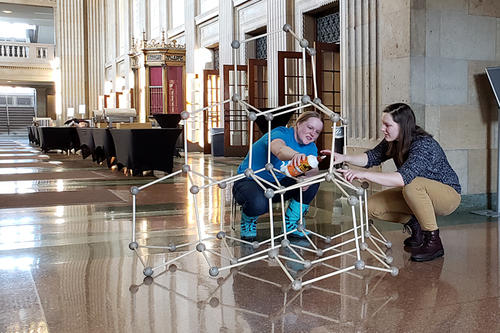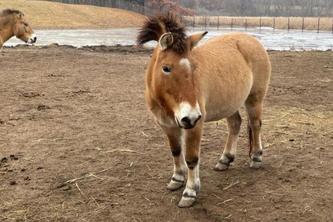
What makes an emerald, exactly? And why do gemstones sparkle? College of Science and Engineering students in the Department of Earth and Environmental Sciences’ Outreach Through Science and Art (OSA) group have the answers.
On Saturday and Sunday, February 22 and 23, 2020, OSA collaborated with Northrop to showcase person-sized models of the atoms that give us diamonds, rubies, and emeralds. Their exhibit accompanied “Jewels,” by Ballet West, a ballet whose three acts were inspired by the beauty of those precious stones.
“‘Jewels’ is a really interesting ballet, because we think of gemstones as jewelry that’s associated with fancy luxury objects,” says OSA founder and PhD candidate Jen Taylor. “But in their most essential state, they’re just another part of the Earth. As earth scientists, we thought this would be a very interesting thing for us to look into.”

Comprising both undergraduate and graduate students, OSA aims to teach people at the University of Minnesota and in the wider community about the science behind art. Members were on hand to answer questions and talk about the project during intermission and for a half hour before each performance.
So where do the colors come from?
“Diamonds are made of a single element—carbon,” Taylor says. “Pure diamonds are clear, but small impurities can make diamonds almost any color. If a carbon atom is replaced by a different atom, it will distort the atomic structure and change how light is absorbed by the crystal. Nitrogen impurities make diamonds look yellow, while boron will make them look blue.”
Taylor hails from Erie, Pennsylvania, a state famous for mines of another carbon-based “stone”: coal, which has elements besides carbon and a relatively disorganized structure. She credits her advisers, Professors Christian Teyssier and Donna Whitney, with providing great support for her outreach work and developing new and creative methods of science communication.
“OSA would not have happened without their encouragement and helpful conversations on the broader impacts of scientific research,” she says. “These projects also would not have been possible without the help of Katherine Keljik, Northrop's campus and community engagement coordinator, who has provided an endless supply of enthusiasm, creative ideas, and logistical support.”
- Categories:
- Science and Technology





